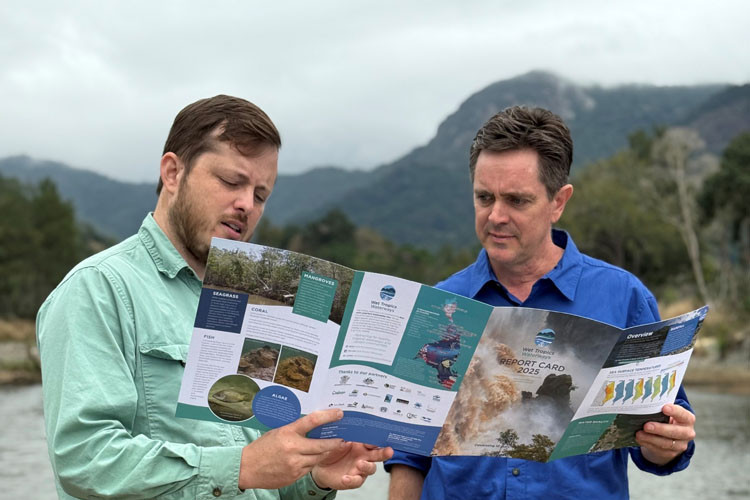General News
20 August, 2025
Jasper’s slap on nature
THE devastating impacts of severe Tropical Cyclone Jasper are a key focus of the 10th annual Wet Tropics Waterway Health Report Card released by Wet Tropics Waterways.

Wet Tropics Waterways chairman Simon Costanzo said this year’s report card highlighted the compounding effects of a major natural disaster on waterway health.
“More than 2m of rain fell across the Daintree, Mossman and Barron catchments after Tropical Cyclone Jasper made landfall near Wujal Wujal in December 2023,” he said.
“This prolonged and intense rainfall broke records, triggered landslides and caused widespread flooding.
“This is the first time in the report card’s 10-year history that we’ve been able to capture the widespread environmental impacts of a natural disaster across the entire region.”
In the immediate aftermath of the cyclone, satellite imagery showed significant flood plumes emerging from northern river mouths, while water quality monitoring revealed high loads of dissolved inorganic nitrogen transported by most rivers as pollutants were flushed off the land.
Dr Costanzo said, that while extreme rainfall was a natural feature of the Wet Tropics, climate change was increasing the intensity and frequency of these events.
“It takes time to fully understand the scale and lasting effects of such an event. Floods are part of our region’s natural cycle, and our waterways are constantly evolving, but extreme events like Jasper can dramatically alter ecosystem function,” he said.
“Landslides have inundated rivers with sediment and inshore reefs and seagrass beds have been smothered. Many species have adapted to very specific microhabitats and when those are lost, populations can be wiped out.”
He said landslides and streambank erosion could continue to degrade water quality, particularly in areas lacking vegetation to stabilise the soil. The spread of invasive species – such as aquatic weeds and pest fish – also poses a growing threat in the aftermath.
Coral communities across the region were severely impacted during 2023–24, with Tropical Cyclone Jasper affecting the north and Tropical Cyclone Kirrily impacting the south.
“Coral is particularly vulnerable to changing conditions,” Dr Costanzo said.
“While bleaching is usually associated with marine heatwaves, in this case it was caused by freshwater flooding and reduced salinity. At Snapper Island, off the Daintree coast, all coral on the southern reef was lost. In the northern zone, average coral cover plummeted from 51 per cent to just 21 per cent.”
Environment Minister Andrew Powell said the Queensland Government was committed to helping communities across the state improve the health of local waterways. “I would like to thank everyone involved in these report cards for their dedication to making a difference for all Queenslanders,” he said.
Read More: Far North

